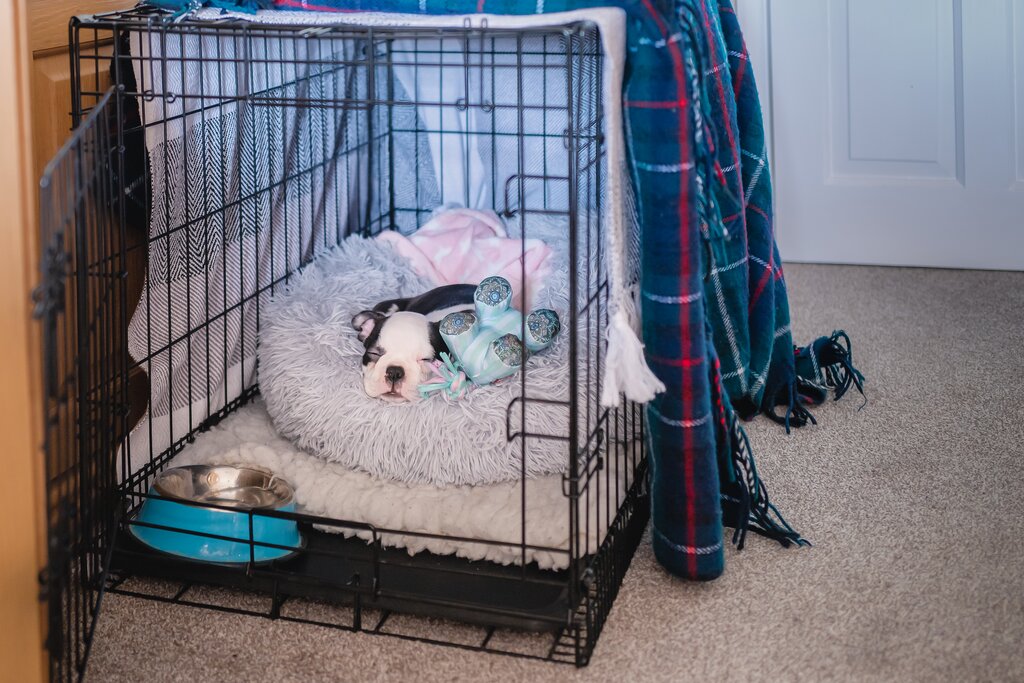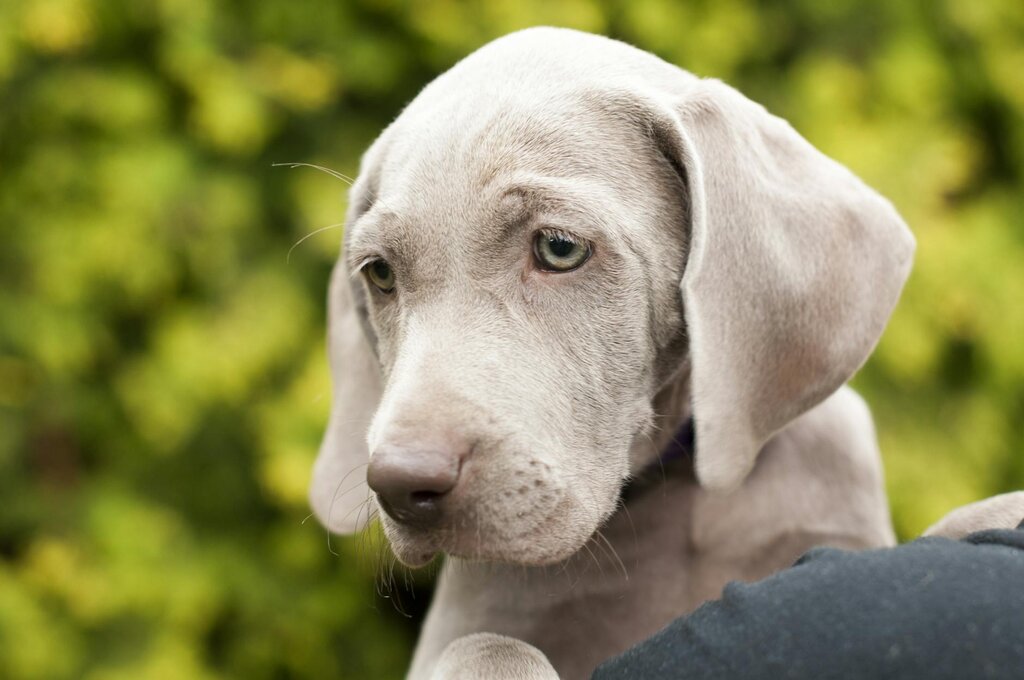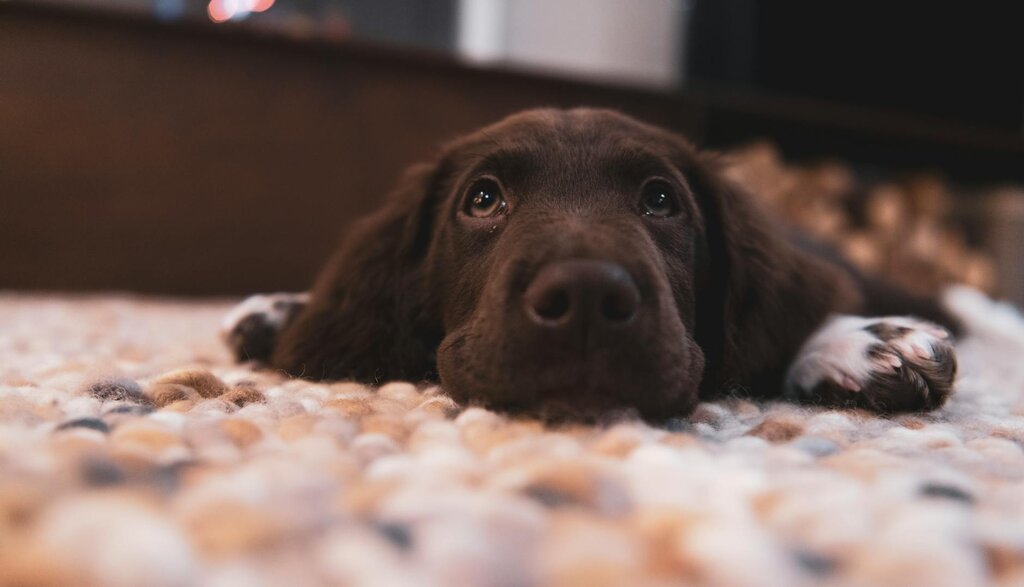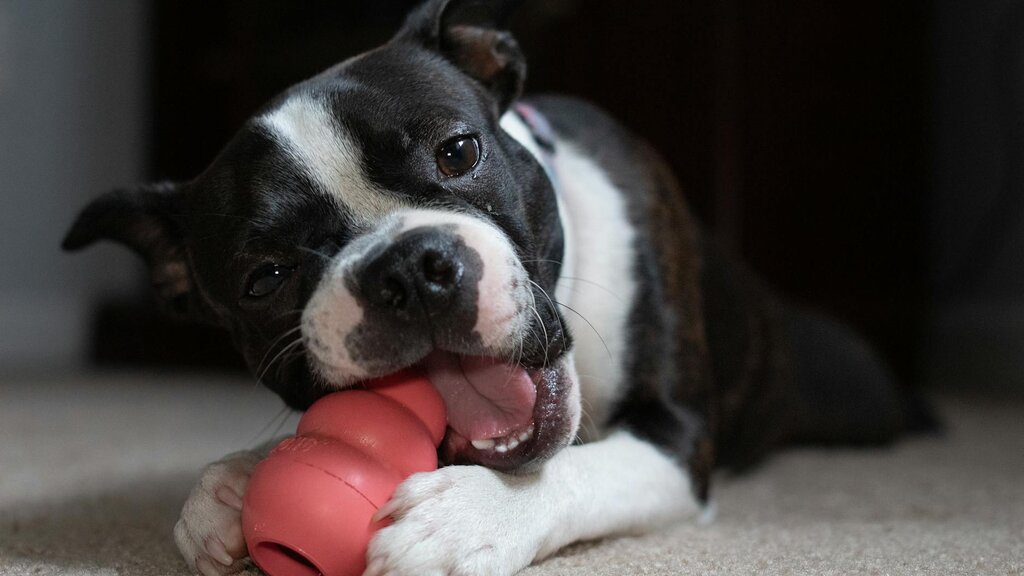Avoid excessive time in the crate
When crate training your puppy, it's crucial to avoid leaving them in the crate for excessive periods. While crates can serve as a useful tool for establishing a safe and secure space, prolonged confinement can lead to stress, anxiety, and even behavioral issues. It's essential to gradually increase the duration of crate time, allowing the dog to acclimate and associate the crate with positive experiences. Regular breaks for exercise, play, and bathroom breaks are vital to prevent boredom and restlessness.
How to deal with whining
Your puppy will undoubtedly cry during the training process. Dealing with whining during crate training is a common challenge, but with patience and consistency, you can push through. It's essential not to reinforce whining by responding to it. If your puppy whines, avoid giving attention, as this can inadvertently reward the behaviour. Wait for a moment of silence before opening the crate. Reward your puppy with treats and praise when they enter the crate willingly or remain calm inside. It can also help to exercise your puppy prior to crating them, and placing comforting items inside the crate.
Recognising and addressing separation anxiety
Recognising separation anxiety in a puppy during crate training is important for addressing the issue promptly. But it can be difficult to distinguish between separation anxiety and normal behaviours that will improve with further training and persistence. Signs of separation anxiety include excessive vocalisation, destructive behaviour, toileting accidents, escape attempts, and restlessness.
Ensuring safety in the crate
Ensuring safety is paramount when crate training a puppy, and certain precautions can contribute to a secure and positive experience. One crucial measure is removing the puppy's collar before placing them in the crate to prevent any potential entanglement or choking hazards. Collars with tags or dangling elements can pose risks during unsupervised crate time. Additionally, close supervision is imperative during the early stages of crate training. Keeping a watchful eye on the puppy allows for timely intervention in case of any signs of distress, discomfort, or attempts to escape.





